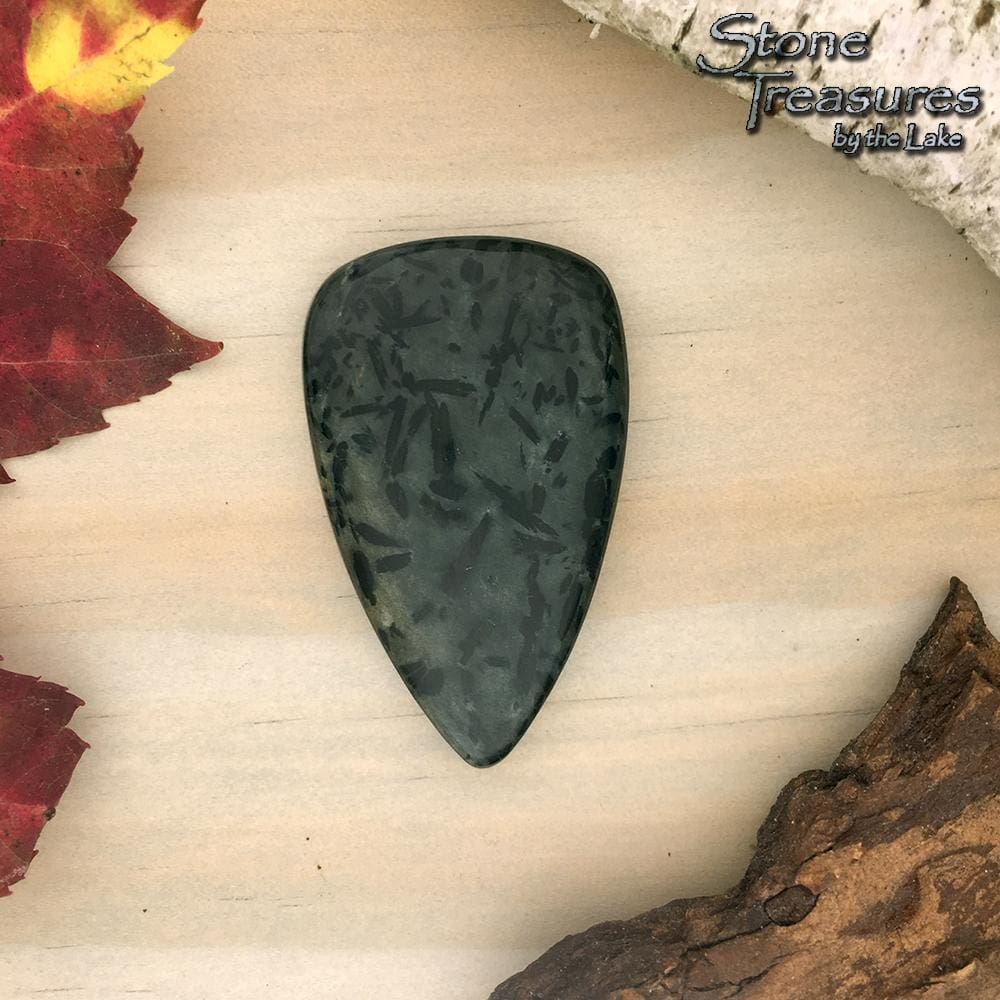
Lake Michigan Pegmatite Cabochon
A pegmatite is an igneous rock, formed underground, with interlocking crystals usually larger than 2.5 cm in size (1 in). Most pegmatites are found in sheets of rock (dikes and veins) near large masses of igneous rocks called batholiths.
The word pegmatite derives from Homeric Greek, πήγνυμι (pegnymi), which means “to bind together”, in reference to the intertwined crystals of quartz and feldspar in the texture known as graphic granite.
Most pegmatites are composed of quartz, feldspar and mica, having a similar silicic composition as granite. Rarer intermediate composition and mafic pegmatites containing amphibole, Ca-plagioclase feldspar, pyroxene, feldspathoids and other unusual minerals are known, found in recrystallised zones and apophyses associated with large layered intrusions.
Crystal size is the most striking feature of pegmatites, with crystals usually over 5 cm in size. Individual crystals over 10 metres (33 ft) long have been found, and many of the world's largest crystals were found within pegmatites. These include spodumene, microcline, beryl, and tourmaline.
Similarly, crystal texture and form within pegmatitic rock may be taken to extreme size and perfection. Feldspar within a pegmatite may display exaggerated and perfect twinning, exsolution lamellae, and when affected by hydrous crystallization, macroscale graphic texture is known, with feldspar and quartz intergrown. Perthite feldspar within a pegmatite often shows gigantic perthitic texture visible to the naked eye. The product of pegmatite decomposition is euclase.
